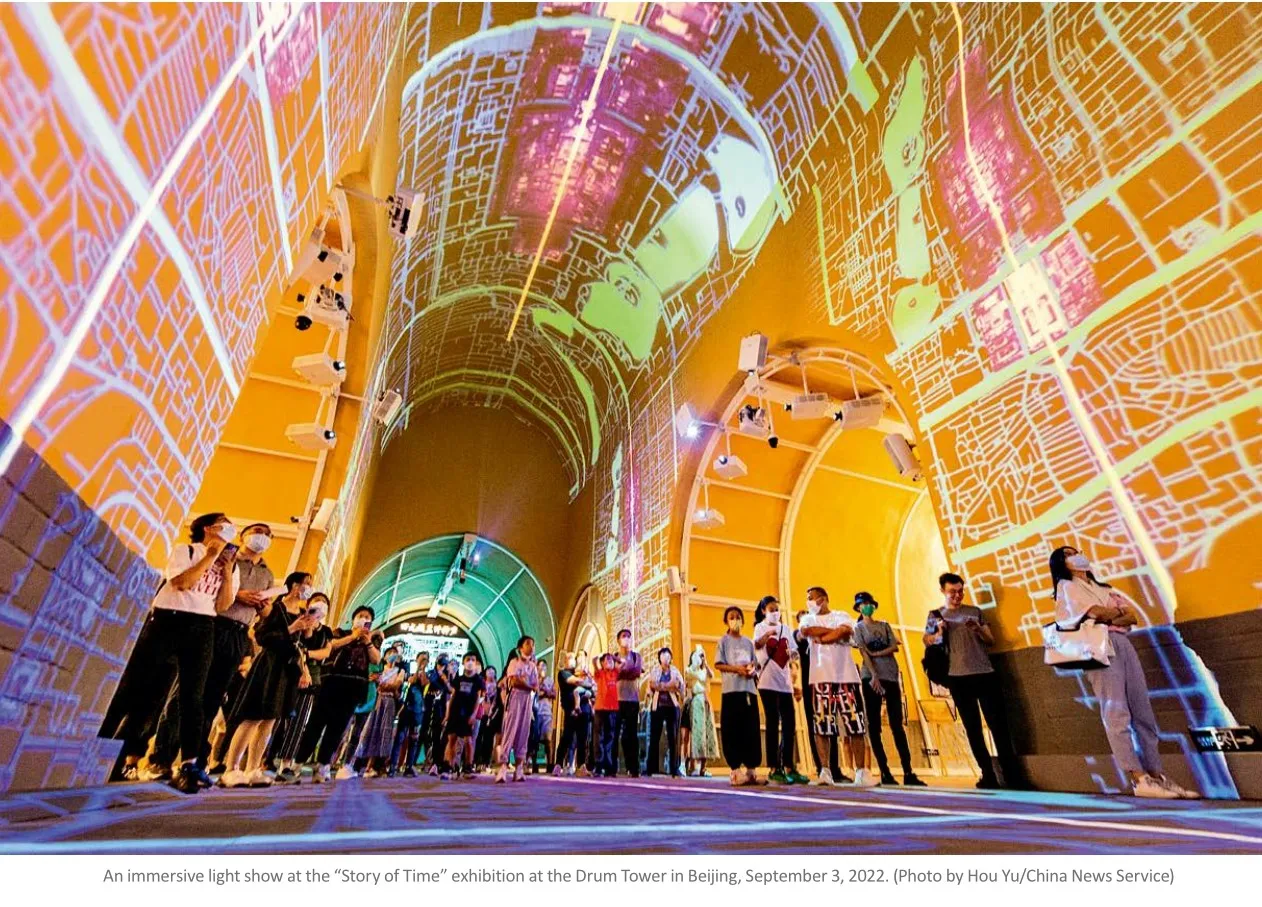Beijing Central Axis A New World Heritage
2024-10-19byGongHaiying
Jingshan Park, an imperial garden from the Ming (1368-1644) and Qing (1644-1911) dynasties on the Beijing Central Axis, is now a popular spot for locals and tourists to enjoy a panoramic view of the Forbidden City from atop a hill with an altitude of 94.2 meters there. Visitors can enjoy the orderly and magnificent urban buildings along the Beijing Central Axis that stretches about 7.8 kilometers from the Bell and Drum Towers in the north to the Yongding Gate in the south.

On July 27, 2024, the Beijing Central Axis — “A Building Ensemble Exhibiting the Ideal Order of the Chinese Capital” — was inscribed on the UNESCO World Heritage List at the 46th session of the World Heritage Committee in New Delhi, becoming China’s 59th World Heritage site. Lyu Zhou, director of the National Heritage Center of Tsinghua University who led text compilation for the Beijing Central Axis’ application for a World Heritage status, was on site to witness this important moment. He noted that the integrity, authenticity, protection, and management of the Beijing Central Axis were highly praised by the UNESCO World Heritage Committee.

Listed as “groups of buildings” in the World Cultural Heritage categories, the core area of the Beijing Central Axis consists of 15 key components. “These 15 components form a whole view in terms of spatial dimension, which determine the layout and form of the entire city of Beijing,” Lyu said. He mentioned that since the construction of Dadu, the capital of the Yuan Dynasty (1271-1368), through the Ming and Qing dynasties to modern Beijing, the Central Axis has experienced repeated planning and construction. It has continued to evolve into the longest urban axis in the world today, shining as an outstanding example of mature capital construction in ancient China.
The concept of “the Central Axis of Beijing” was proposed by renowned modern Chinese architect Liang Sicheng. He once remarked that Beijing’s unique and magnificent order was created by the establishment of this Central Axis. Beijing is far from the only city in the world with a central axis. Many capital cities around the world such as Paris, Berlin, and Washington, D.C. also feature such an axis. Thus, during its application for a World Heritage status, international experts asked: “What makes the Beijing Central Axis special?”
Lyu said that cultural diversity and uniqueness are basic requirements for a World Heritage site. In the process of compiling the World Heritage application text for the Beijing Central Axis, he and his team emphasized the profound cultural heritage and philosophical ideas embodied in the Beijing Central Axis based on the relevant standards of UNESCO. The Beijing Central Axis reflects the pursuit of order in Chinese culture. The symmetrical layout of buildings and the consistency of landscapes along the Central Axis conform to the ideal paradigm of a capital city described by the ancient Chinese and embody the philosophical concepts of “centrality” and“harmony” advocated by Chinese civilization.
The uniqueness of the Beijing Central Axis as a World Heritage site lies in its display of Chinese cultural characteristics and aesthetic pursuits. The world’s first project to emphasize an axis, the Cosmological Axis of Yogyakarta and its historic landmarks in Indonesia were inscribed on the World Heritage List in 2023. This 6-kilometer-long axis manifests Javanese philosophical concepts on the universe, human life, and especially the cycle of life, with physical objects.

In fact, subtle semantic differences set off the axes in Chinese cities from those in Western countries. Li Yuhong, a professor with Renmin University of China, pointed out that the Chinese character “中” (center)emphasizes the middle in terms of direction and position. However, in English, “axis” refers to a real or imaginary straight line going through the center of an object that is spinning, or a line that divides a symmetrical shape into two equal halves. Different understandings led to contrasting construction styles of urban axes in the East and the West. The central axis of the East adopts a north-south main axis model and develops multiple parallel auxiliary axes like a chessboard, such as those in Kyoto and Seoul. However, urban axes in Europe and America radiate in any direction and develop into a centrally symmetrical “X” or star-shaped multi-branch system, such as the radial axial system in Paris with a main axis and radial secondary axes.

As Lyu noted, the Beijing Central Axis is a constantly growing living heritage that belongs not only to history but also to the present and the future. Since being included in the China World Cultural Heritage Tentative List in 2012, Beijing has successively launched more than 100 projects on both sides of the Central Axis in terms of functional dispersal, ancient building renovation, and street management, which has promoted the overall protection of the old district of Beijing. At the same time, publicity surrounding the Beijing Central Axis during its World Heritage application process has helped form social cohesion. Many citizens have participated in telling stories of the Beijing Central Axis. Many tourism products, creative product designs, and tourist routes to experience the Beijing Central Axis also emerged. Some time-honored Beijing brands have also used the elements of the Beijing Central Axis to improve and update their products.
After a successful application for a World Heritage status, the Beijing Central Axis is bound to attract more international attention, which sets higher requirements for its protection and management. It will lead Beijing towards a greener, healthier, and more sustainable future featuring harmonious coexistence between history and modernity.
